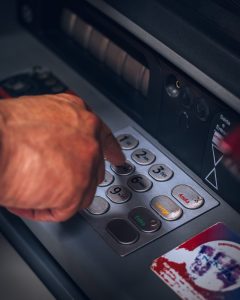Forex trading is all about making the right decisions at the right time. One of the most crucial decisions that traders have to make is identifying when a trend is about to reverse. Spotting a trend reversal in forex can be challenging, but it is essential to avoid significant losses and maximize profits. In this article, we will explore how to spot trend reversal forex.
First, let’s discuss what a forex trend is. A trend is the general direction that the market is moving. It can be an uptrend or a downtrend. An uptrend is when the price of a currency pair is increasing over time, while a downtrend is when the price is decreasing. Traders use technical analysis tools to identify trends and make trading decisions.
Now, let’s delve into how to spot a trend reversal forex.
1. Identify Support and Resistance Levels
Support and resistance levels are critical indicators for spotting trend reversals. A support level is a price level where buying pressure is strong enough to prevent the price from decreasing further. On the other hand, a resistance level is a price level where selling pressure is strong enough to prevent the price from increasing further.
When a currency pair is in an uptrend, it will encounter resistance levels that will prevent it from increasing further. Conversely, when a currency pair is in a downtrend, it will encounter support levels that will prevent it from decreasing further. If the price breaks through the support or resistance level, it could be a sign that the trend is about to reverse.
2. Use Moving Averages
Moving averages are another essential tool for identifying trend reversals. A moving average is the average price of a currency pair over a specific period. Traders use different types of moving averages, such as simple moving averages, exponential moving averages, and weighted moving averages.
When a currency pair is in an uptrend, the moving average will be below the price. Conversely, when a currency pair is in a downtrend, the moving average will be above the price. If the price breaks through the moving average, it could be a sign that the trend is about to reverse.
3. Monitor Momentum Indicators
Momentum indicators, such as the Relative Strength Index (RSI) and the Moving Average Convergence Divergence (MACD), are valuable tools for identifying trend reversals. These indicators measure the strength of a trend and can provide signals when the trend is about to reverse.
For example, if the RSI is above 70, it could indicate that a currency pair is overbought and could be due for a reversal. Conversely, if the RSI is below 30, it could indicate that a currency pair is oversold and could be due for a reversal.
4. Pay Attention to Candlestick Patterns
Candlestick patterns are a popular tool for identifying trend reversals. These patterns provide visual cues that can help traders identify when a trend is about to reverse. Some of the most common candlestick patterns include the Hammer, the Shooting Star, and the Doji.
For example, a Hammer pattern can indicate that a currency pair is about to reverse from a downtrend to an uptrend. A Shooting Star pattern can indicate that a currency pair is about to reverse from an uptrend to a downtrend.
5. Analyze Economic Data
Economic data can also provide valuable insights into when a trend is about to reverse. Traders should keep an eye on economic indicators such as Gross Domestic Product (GDP), inflation rates, and interest rates. These indicators can affect the value of a currency and can provide signals when a trend is about to reverse.
For example, if the GDP of a country is decreasing, it could indicate that the currency is weakening, and a trend reversal could be imminent. If interest rates are increasing, it could attract more investors to the currency and could result in a trend reversal.
In conclusion, spotting a trend reversal in forex is essential for making profitable trades. Traders should use a variety of tools and indicators, including support and resistance levels, moving averages, momentum indicators, candlestick patterns, and economic data, to identify when a trend is about to reverse. By paying attention to these factors, traders can make informed decisions and avoid significant losses.





